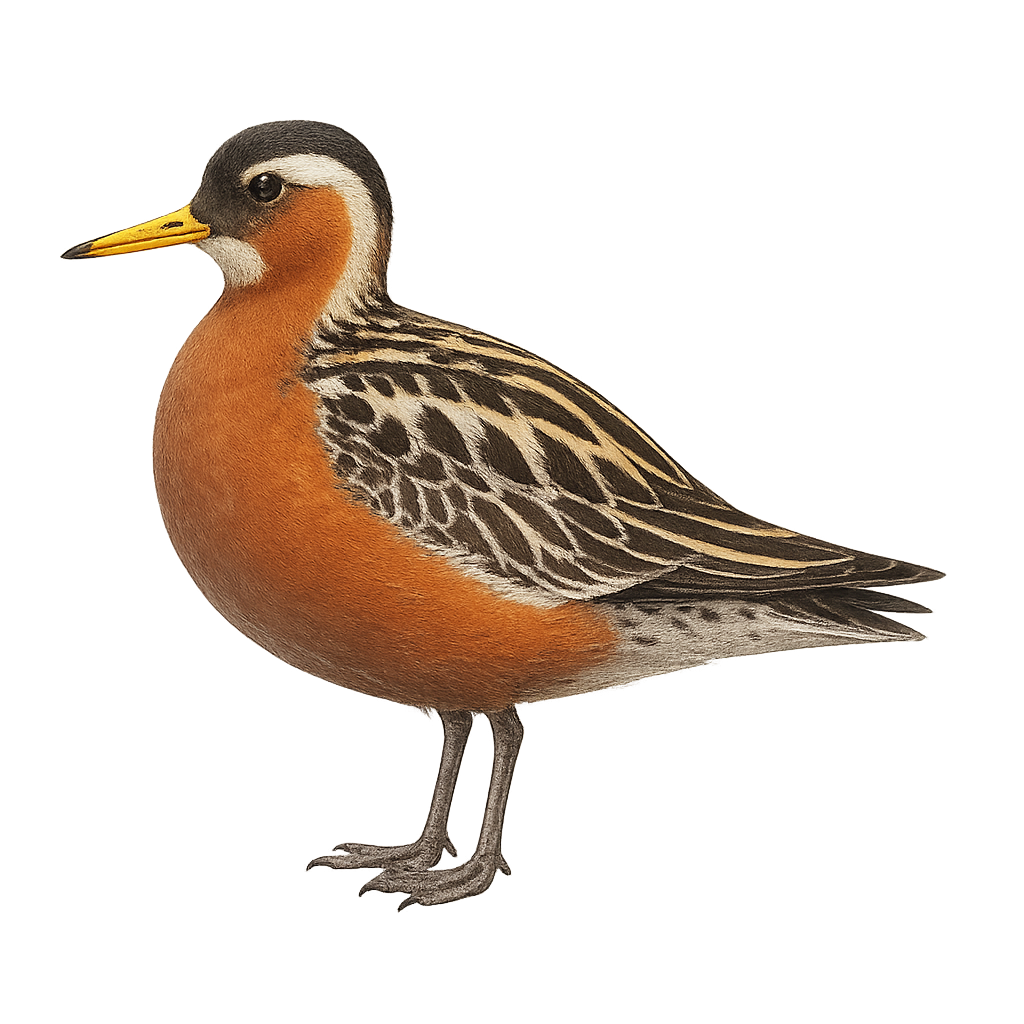Your wildlife photography guide.
Explore the red phalarope in detail, study its behavior, prepare your shots.
Where to observe and photograph the red phalarope in the wild
Learn where and when to spot the red phalarope in the wild, how to identify the species based on distinctive features, and what natural environments it inhabits. The WildlifePhotographer app offers tailored photography tips that reflect the red phalarope’s behavior, helping you capture better wildlife images. Explore the full species profile for key information including description, habitat, active periods, and approach techniques.
Red Phalarope
Scientific name: Phalaropus fulicarius

IUCN Status: Least Concern
Family: SCOLOPACIDAE
Group: Birds
Sensitivity to human approach: Suspicious
Minimum approach distance: 10 m
Courtship display: May to June
Incubation: 18-20 jours
Hatchings: June to July
Habitat:
Wetlands, lakes, marshes, coasts
Activity period :
Primarily active during the day, with peak activity in the morning and late afternoon.
Identification and description:
The Red Phalarope is a medium-sized aquatic bird, measuring about 20 to 22 cm in length with a wingspan of 40 to 46 cm. It is distinguished by its bright breeding plumage, featuring a gray back, white head, and reddish chest. Outside the breeding season, its plumage becomes duller, with gray and white tones. This bird is known for its reversed breeding roles, where females are more colorful and court males. It primarily feeds on small aquatic invertebrates, which it captures by swimming in circles to create whirlpools that bring food to the surface.
Recommended lens:
400 mm – adjust based on distance, desired framing (portrait or habitat), and approach conditions.
Photography tips:
To photograph the Red Phalarope, it is advisable to use a telephoto lens of at least 400mm to capture detailed images without disturbing the bird. Approach slowly and maintain a safe distance of about 10 meters. The best photo opportunities often occur at sunrise or sunset, when the soft light highlights the colors of its plumage. Be patient and wait for the bird to feel comfortable to get natural shots.
The WildlifePhotographer App is coming soon!
Be the first to explore the best nature spots, track rutting seasons, log your observations, and observe more wildlife.
Already 1 439 wildlife lovers subscribed worldwide

